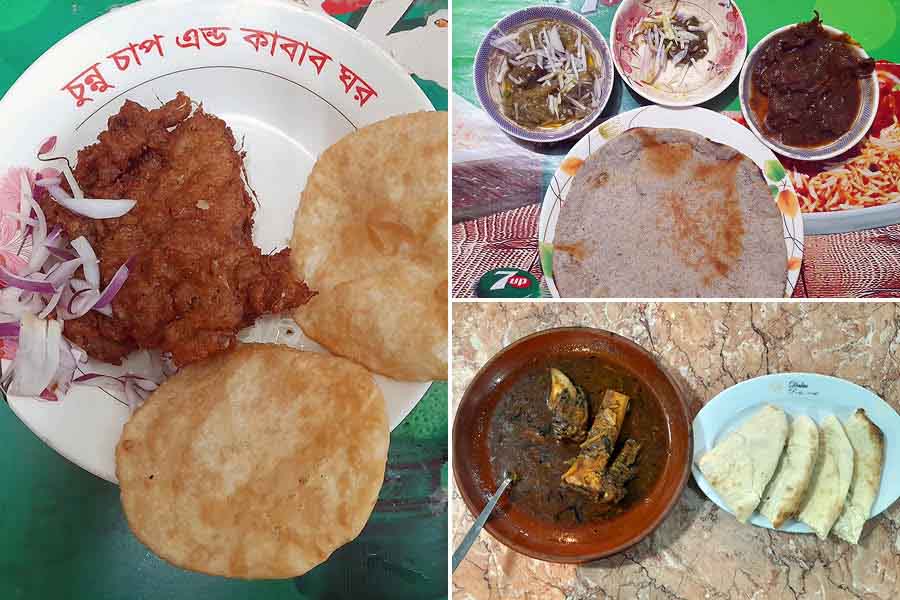Mahasthan Garh is the oldest and largest archaeological site in Bangladesh. Scottish surgeon, surveyor and botanist Buchanan Hamilton visited the site during his survey in the early-19th century. Later, in 1879, Alexander Cunningham, often referred to as the ‘Father of Indian archaeology’, carried out some preliminary digs. The first major dig was carried out in 1928-29 and several digs followed revealing seven layers of historic period with the oldest dating back to the pre-Mauryan period (3rd century BCE) and ending with the Islamic period.
Findings revealed that the place was originally known as Pundranagar and the name Mahasthan Garh, literally meaning fortified place of an auspicious personage, evolved at a much later stage. Not only Mahasthan Garh, the names of many of the adjoining archaeological sites have evolved at a later date. The excavation continues to this day revealing unknown facts of hidden history. Today, the citadel of Mahasthan Garh is located 13km north of the district headquarters Bogura (Bogra) and there are several other sites spread across an area of radius of about 8km.
Bhasu Vihara
Bhasu Vihar, along with Bihar Dhap, are the western most sites of Mahasthan Garah and is around 10km by road from the citadel. Locally known as the Narapatir Dhap, Bhasu Vihar is the most impressive of the Mahasthan Garh sites. The post-Gupta period site includes four major structures including two monastic complex. The two monastic complex houses 26 and 30 monastic cells each. The cell served as the residence of the monks. The main shrine stands on the southern end. There is another structure on the southeast corner. Apart from structural findings, the archaeological excavations (which started in 1973-74) yielded bronze images, terracotta plaques, decorated bricks and inscribed terracotta seals.
Bihar Dhap
Bihar Dhap, also known as Totaram Panditer Dhap. It is located 2.5km south of Bhasu Vihara. It consists of a single monastic complex with 37 cells. It is far less impressive than his neighboring northern counterpart.

Mahasthan Garh citadel complete with walls, bastions and gate. (Clockwise from top left) Dorab Shah Toran, tourists walk along the citadel wall, bastions and walls of the citadel and citadel wall
Mahasthan Garh Citadel
The citadel follows an approximate square plan with each side about 1.5km in length. The northern, western and southern side had deep moat while the Karatoya river provided natural protection on the eastern side. The river has long shifted but traces of it and also of the moat can still be seen. Today, large chunks of the eastern wall have been excavated.
The thick wall is complete with bastions and gateways. Several other excavations have revealed several gateways like the Tamra Darwaza (west side of southwest corner) and Burir Fatak (southern side of southeast corner) and Dorab Shah Toran (east side of southeast corner). Over the decades, several excavations have exposed several structures within the citadel walls. These include Parasuram Palace and Boiragir Bhita.
Parasuram Palace
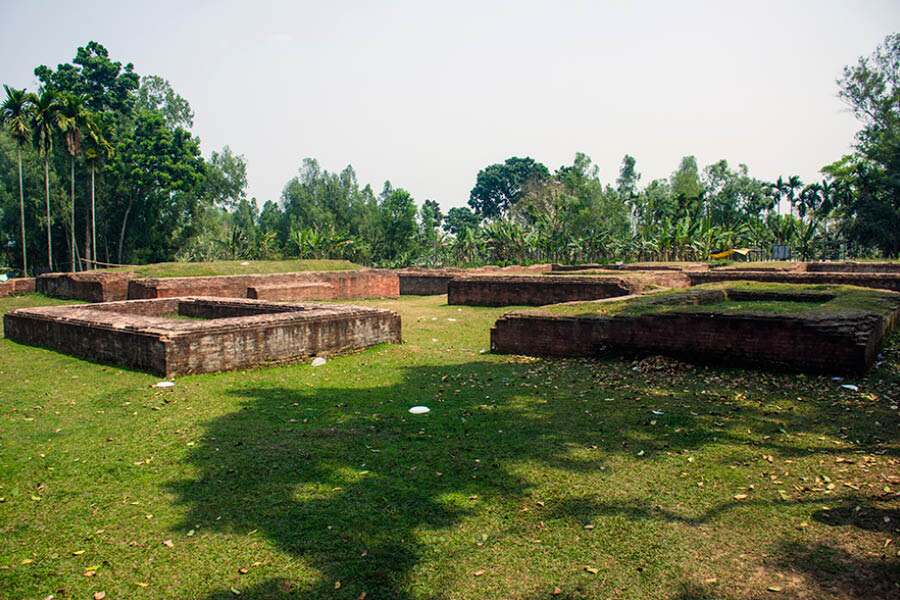
It is located on the southern portion of the citadel and the archaeological dig has exposed a relatively new structure of the Islamic period dating back to the late-18th or early-19th century.
Boiragir Bhita

It lies on the northern end of the citadel. Archaeological digs have exposed the remains of two fragmentary temples of the early and late Pala periods (8th-9th century and 11th century) along with some subsidiary structures.
Govinda Bhita
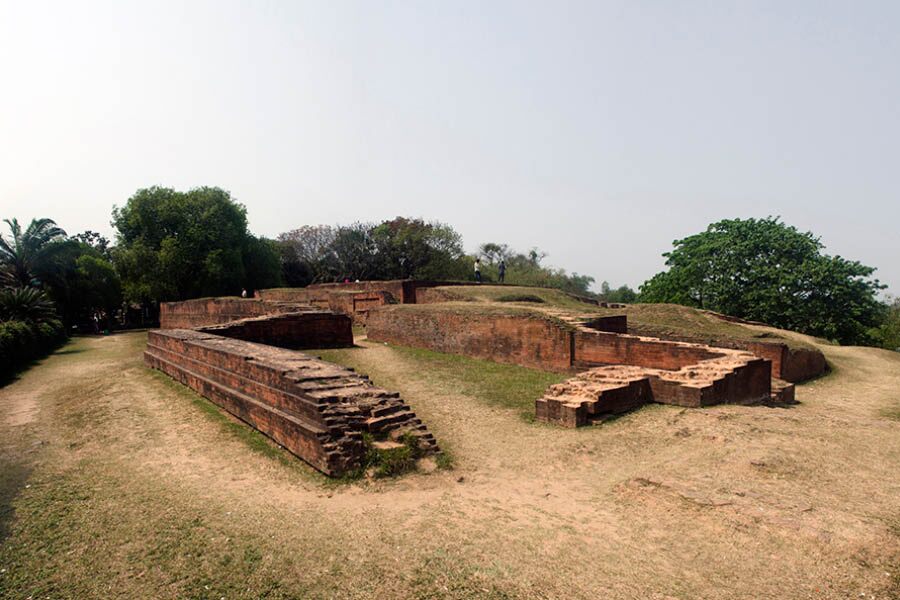
These archaeological sites lie just outside the citadel and are located in the north-east corner. Archaeological digs of 1928-29 and 1960 have unearthed objects dating from the 2nd century BCE right up to the Islamic period. The exposed structural remains consisting of two complexes dating back to the late-Gupta period of late-6th century CE. Among the temples, the western one is bigger than the eastern one. The eastern one also has been reconstructed and four phases of construction can be traced.
Mahasthan Garh Museum
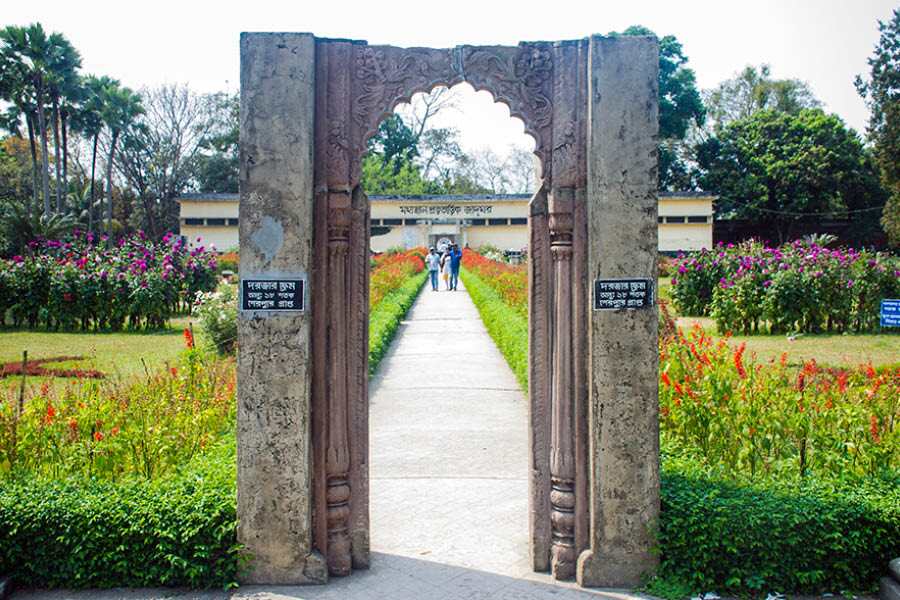
This is located bang opposite the Govinda Bhita and just outside the citadel. The small museum dates back to 1967 and houses a collection of artifacts collected from the nearby sites.
Gokul Medh
Gokul Medh, often referred to as the Behula-Lakshmindarer Basar-ghar, lies about 3km south of the citadel. It consists of a gigantic Buddhist stupa excavated during the archaeological dig of 1934-36. The shrine dates back to the 6th-7th century CE. The plinth was built of 172 blind rectangular cells packed solidly with earth and arranged in gradually rising tiers to support a towering polygonal shrine.
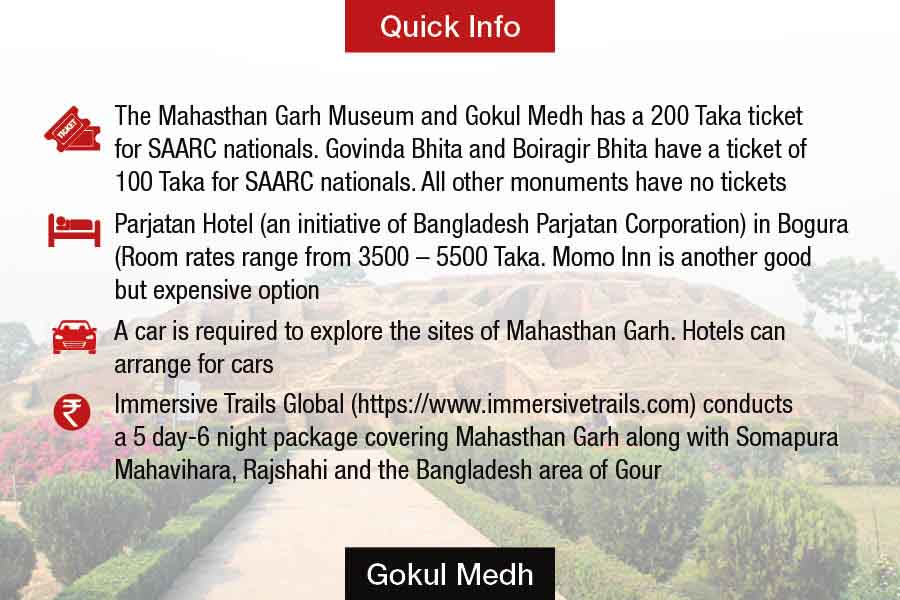
Food for the body
Even today, archaeological dig continues in the citadel and beyond and exposing centuries of buried history and providing food of thought to curious visitors. But the region also has its share of interesting and unique food stops. The nearby town of Bogura has some amazing food options and no trip to Bogura is complete without a stop at Chunnu Chaanp and Kebab Ghar. It is an amazing place offering a unique combination of deep-fried beef with luchi. The piece of beef is first hammered into a thin sheet and coated with a thick layer of batter. It is then deep fried and served with luchi and shredded onion.
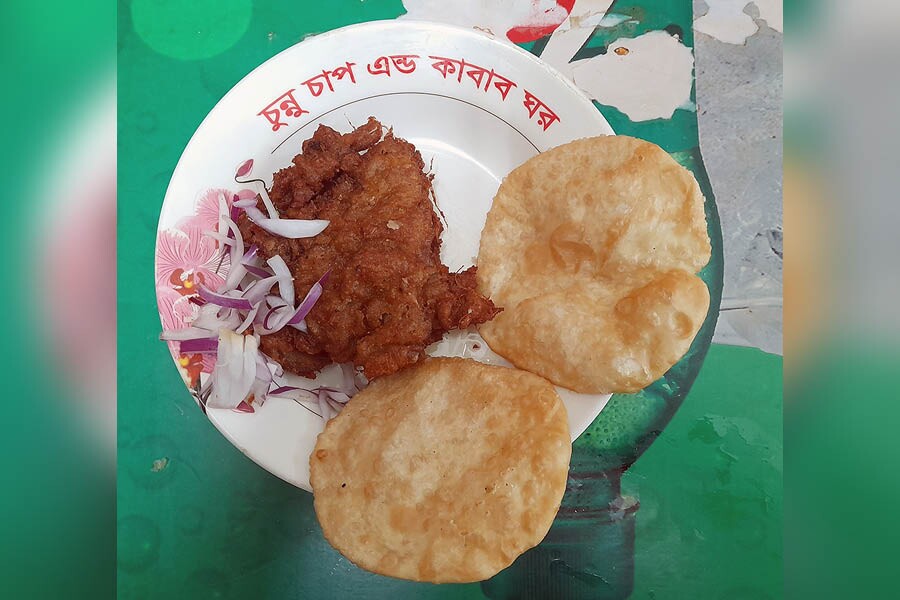
Beef Chaanp from Chunnu Chaanp and Kebab Ghar
Fried chicken (cooked in similar pattern) is also on the menu. The food is usually gulped down with refrigerated soft drinks. Any meal in Bangladesh also ends on a sweet note and a trip to Mahastahan Garh must end with a chunk of the famous Bogura Doi. The doi comes in two varieties, namely – Sara Doi and Khirsa. The word ‘sara’ refers to a shallow earthen container on which the curd (doi) is made. It comes in with a hard brown-coloured crust on top. Khirsa is also available in a ‘sara’ and is not a curd but a thick sweetened kheer. Although Bogura is said to be the origin of the two sweet items, they are actually made at Sherpur, a small town slightly south of Bogura.



